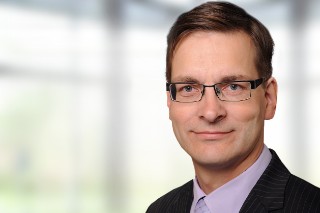New high-performance polymers are the basis for fiber-plastic composites and complex fiber composite components. The synthesis of the polymers and formulation of the reactive resins represent the beginning of the development and value chain. In the next step, the polymers are used to manufacture semi-finished products and high-performance prepregs with a wide variety of fibers. Microwaves or UV light are used for energy-efficient processing of the polymers. In addition to these focal points, concepts, processes and technologies are developed for the repair and recycling of fiber-reinforced components.
Contact Press / Media
Prof. Dr. Christian Dreyer
Head
Polymer development
Schmiedestraße 5
15745 Wildau
Phone +49 3375 2152-280
Fax +49 3375 2152-282

